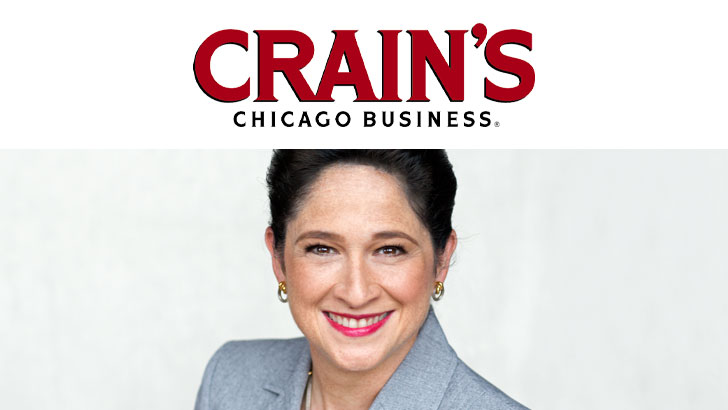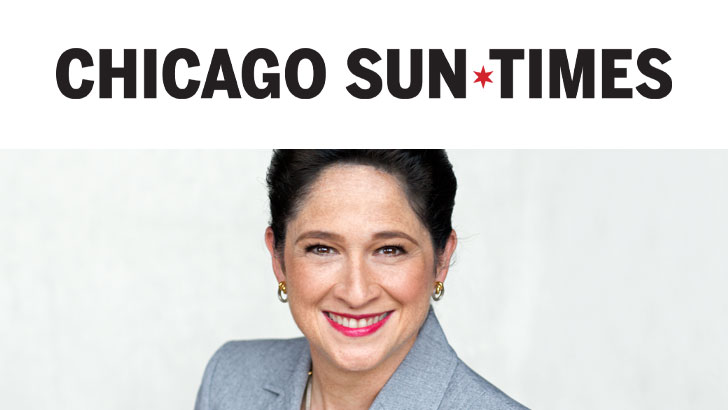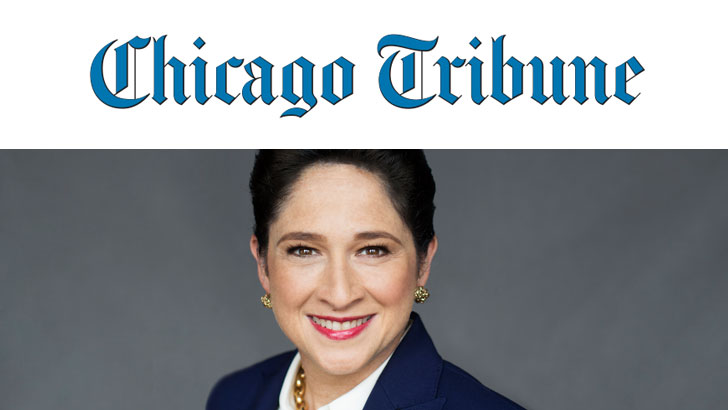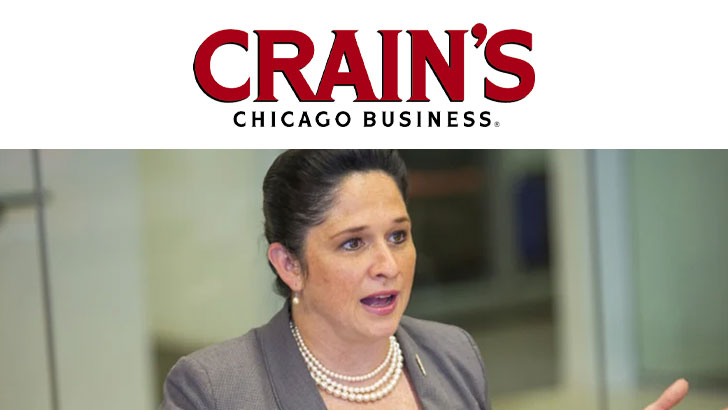
Op-Ed: Points in favor of state bill payments reform
March 9, 2022
Op-Ed: Our students deserve stable classrooms, not Brandon Johnson’s costly chaos
December 23, 2024Op-Ed: Before City Hall launches this $1.5B bond issue, stop and think
— Crain’s Chicago Business – Letter to the Editor | Susana A. Mendoza —
Just because the city of Chicago can borrow more money doesn’t mean it should.
The City Council is scheduled to vote Oct. 9 on a $1.5 billion bond issue originally designed to refinance $980 million worth of debt.
That has now expanded to $1.5 billion, and the projected savings city officials are promising have grown from $70 million to $90 million.
City Council members should wait until Mayor Brandon Johnson’s administration shows them and Chicago taxpayers the math explaining how the growing bond issue will save city taxpayers $90 million and what exactly the full $1.5 billion will be spent on.
Better yet, the City Council should limit its bond issuance to the refinancing of the original $980 million, assuming they can in fact prove that their projected savings are real, and forgo bonding out a penny more.
The parking meter sell-off and other risky deals over the years in which aldermen were asked to trust the mayor’s office teach us it’s better to demand the details up front.
The state of Illinois is in the process of securing an estimated $115 million in savings from refinancing $1.088 billion in bond debt. The other $600 million newly issued sale proceeds will be for capital and pension acceleration needs and not for any state operating expenses.
The city’s refinancing may likewise turn out to be a good deal that I, as the state’s chief financial officer, could support. I’ve worked hard with legislators and the governor to stabilize the state’s finances and am proud to have helped lead our state to nine credit upgrades on my watch, the first in over 20 years.
Just like with the state’s finances, responsible fiscal discipline and transparency are critical to restoring stability and predictability to the city’s finances.
In 2017, I traveled the state talking to civic groups and editorial boards, including Crain’s, about the wisdom of refinancing a portion of the state’s debt.
We were paying 12% annual interest on much of the $16.7 billion pile of unpaid bills former Gov. Bruce Rauner had run up. The General Assembly authorized refinancing $6 billion of that debt at a lower rate.
Having learned from watching Gov. Rod Blagojevich squander bond money on pet projects, my office made sure legislators wrote right into the legislation and bond covenants that the money could only be used to retire old debts incurred before July 2017. And that’s exactly what I planned to do.
But Rauner was refusing to issue the bonds.
So I explained to the civic groups and editorial boards: If you could refinance your mortgage down from 12% to 5%, you’d do it, right? Eventually, we brought enough pressure to force the then-governor to agree to the refinancing. We got a rate of 3.5%. I targeted Medicaid bills that gave us a 50-cents-on-the-dollar federal match, so I paid off $9 billion in debt with those $6 billion of bonds. We saved state taxpayers $4 billion to $6 billion in interest fees. It was a great deal for taxpayers.
The moral is: Get it in writing. How exactly will the refinancing save city taxpayers $90 million? Show the rates and how you get there. If the deal is as good as the administration says it is, they should be very proud to show their math.
Is there a dedicated revenue stream to pay back the bonds beyond sales taxes and the General Revenue Fund? If so, what is it?
Recognizing that the bond rating agencies frown upon adding to your debt load, something that could lead to a credit downgrade, why bond out an additional $520 million and what specifically will it be spent on? What is the plan for paying it back?
Chicago City Council members justifiably concerned about the city’s precarious financial position stood up for taxpayers by forcing an amendment stipulating that this money could not be spent on operating expenses. Unfortunately, a “master indenture” that’s being offered with the bond deal appears to allow the mayor and CFO to determine under certain conditions that they could use some of the money for operating expenses. In other words, the amendment is like Swiss cheese — full of holes.
The better solution to ensure they protect taxpayers from taking on too much debt would be to introduce a substitute ordinance that deals only with the cost-saving refinancing component, free from additional borrowing.
Taking on an additional half a billion dollars of debt to cover operating expenses is fiscally irresponsible. Using bond proceeds for operating expenses is like putting your groceries on your credit card. I’ve often said, if you can’t afford the car, don’t buy it. And definitely never put it on your credit card.
As Fort Sheridan Advisors Managing Partner Stuart Loren recently wrote, “Debt is not a solution to structural deficit problems.” He is right.
The bond rating agencies are watching. A provably good refinancing for specified needs that saves taxpayers money is defensible. But borrowing more than we need just because we can to create a slush fund for operating expenses could invite downgrades and should be avoided.
As state comptroller, I’ve always taken pride in protecting Illinoisans’ hard-earned tax dollars. It’s their money, not mine. The same is true for Chicago City Council members. They have an opportunity right now to stand up for Chicago taxpayers by asking the tough questions, demanding full transparency and passing only what is demonstrably cost-saving and nothing more.
SUSANA A. MENDOZA
Illinois state comptroller
Related posts
Stay up to date
Sign up to be a part of Team Susana today! You will receive notifications on activities, announcements and more.





